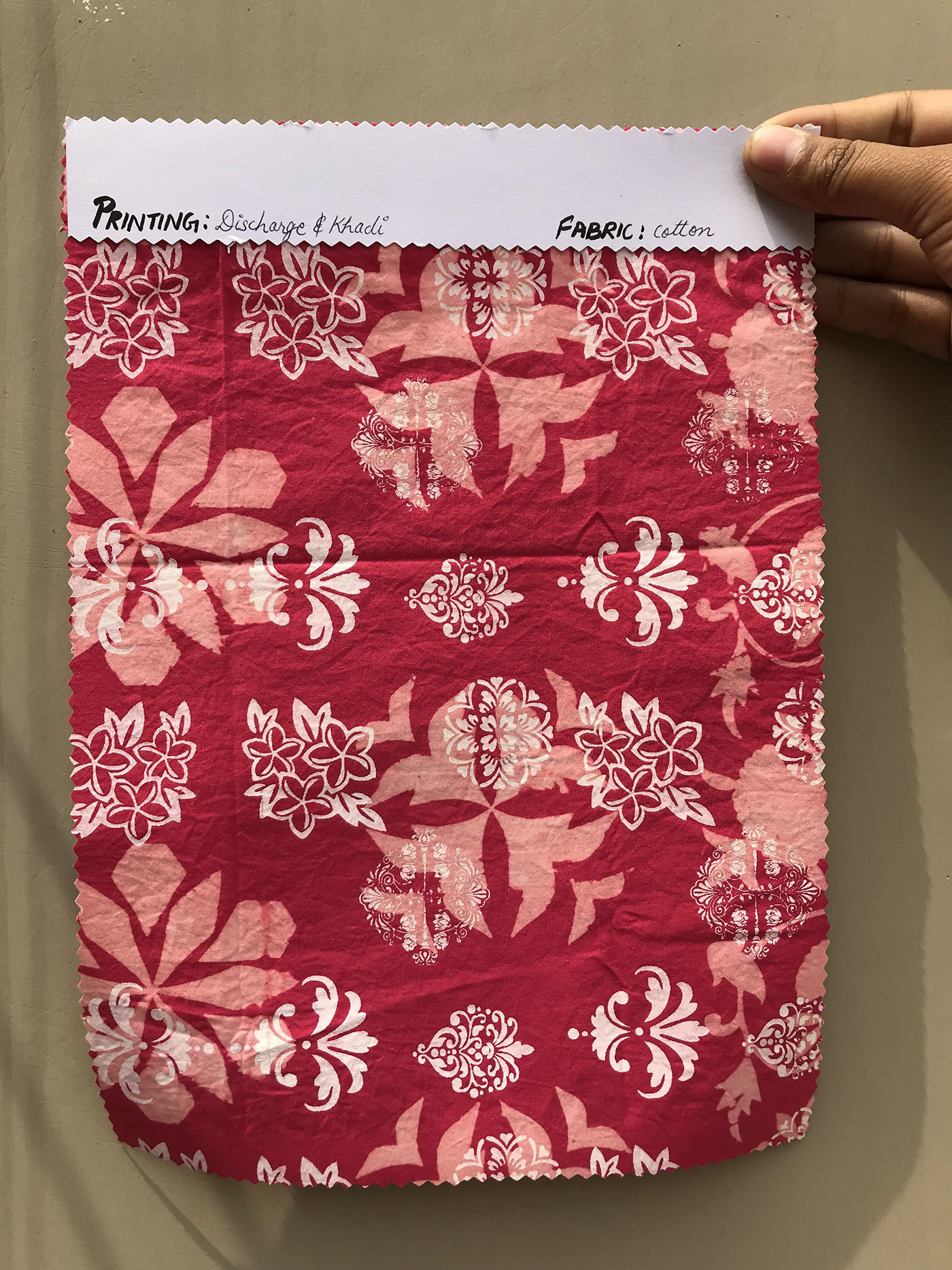CHEMICALLY PRINTED FABRICS
In this process, different fabrics such as 100% cotton, silk, polyester and brasso were printed using certain printing techniques that included the use of chemicals. There are some specific chemicals required to print different fabrics at some required atmospheric conditions, such as temperature, pressure and humidity.

1
Brasso fabric is a blend of cotton and polyester. Here it is screen printed with a solution of aluminium sulphate and gum indalca AGBV and heated in an oven at 102-104 degrees for 5-8 minutes. After the fabric is heated, the area that contained the chemical burnt off. These were cotton fibres, as they were sensitive towards aluminium sulphate. Then the fabric is tied and dyed with direct dye so that the cotton of the fabric gets dyed and the polyester remains as it is.

2
Here silk fabric was printed with acid dyes. Pastes were made by mixing acid dyes with a certain binder that helped the dye fix on the fabric. Different wooden blocks were used to print this fabric.

3
The cotton base fabric was first dyed in direct dye, then discharge printing technique was executed on it with the help of screens. After the colour of the dyed fabric faded with time due to discharge of colour, Khadi printing was done over it. Khadi printing paste was used with the help of screens and then was dried and steamed at controlled pressure in the steaming chamber.

4
Cotton fabric was taken as a base and printed with a technique called Crypon/ Crepon printing. Here in, concentrated NaOH was taken with a binder and applied to the fabric with the help of wooden blocks. After drying, the fabric was washed to remove the excess NaOH. Then the fabric was dyed with direct dye and further dried till the pattern was clearly visible.

5
Here, an ivory sheet was painted with liquid disperse dyes and then kept under an heating iron at 109 degrees with the polyester fabric with it. It was pressed with the fabric for 20 seconds and then removed, which dispersed the dyes from the paper to the fabric. We always get a mirror image while doing this technique because the face of the fabric was placed facing the face of the painting.
thank you


